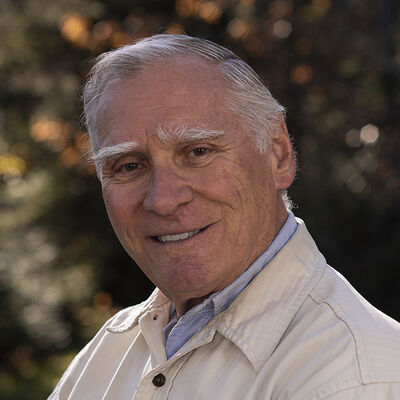Lens reversal
Feb 25, 2018 23:22:29 #
I know that when you use extension rings that a lens with a longer focal length allows you to focus farther away from the lens, but what happens when you reverse a prime lens? Does it reverse everything meaning that the longer the lens the closer the focal point? Also which lens will give you the most magnification? Does a 50mm lens give you a bigger image than say a 35mm lens will, or is it the other way around does a 35mm lens give you a bigger image than a 50mm lens will. And lastly is it possible to use a reversed lens along with extension tubes, or is the focal point just too close for that to work because the focal point will be inside of the lens itself?
Feb 25, 2018 23:28:08 #
Good article on the subject:
https://photographylife.com/focal-length-in-reverse-lens-macro-technique
https://photographylife.com/focal-length-in-reverse-lens-macro-technique
Feb 26, 2018 01:03:51 #
It will depend on the lens, and how far the reversed front element--now the rear element--is from the sensor. That being said, the shorter the focal length of the lens, the closer will be the focus point for a given extension. It is absolutely possible to have too much extension, such that the focus point is within or behind the lens, and it will be easier to go there with a shorter focal length lens.
Feb 26, 2018 06:29:43 #
Mike - If you are truly serious about macro photography, it might pay the greatest dividends to a) save up for a dedicated macro lens and b) in the meantime, consider renting a macro lens rather than messing around with makeshift DIY alternatives. Just my 2¢.
Feb 26, 2018 07:43:54 #
Back in 1998,....I once had to shoot a close up assignment of the machined tips of wires used for Angioplasty to insert a balloon-tipped catheter into a narrow or blocked blood vessels.
I was a working for the company that machined these wire tips on precision high speed lathe,...to varying tip shapes to accommodate different Angioplasty applications
I thought the assignment was far beyond my capability,...but after much research came up with the following technique that pleased management.
I obtained excellent 6.4 X high magnification with the following lens stacking setup procedure using a Nikon SLR.
Camera body to a 1.4 telextender,...to a 200mm prime lens,...to a 52mm/52mm reversing ring,...to a 50mm reversed lens.
Results were excellent,...had to use this setup on a precision x & y axis rail,.... to achieve focus and location of wire tip in my viewfinder.....al on a very steady tripod.
I still have all my technical data for many other lens reversal combinations giving many magnification ratios if anyone is interested in how I managed to pull of this assignment.
Was a very enjoyable and educational learning process that produced excellent images for the medical company who manufactured the wires.
I believe I still have the images should anyone want to see my resulting high magnification quality I achieved.
I was really amazed at what can be accomplished with my on hand Nikon lenses and a few accessories.
PS,....the assignment paid vary well at the time which was nice compensation while I was learning.
I was a working for the company that machined these wire tips on precision high speed lathe,...to varying tip shapes to accommodate different Angioplasty applications
I thought the assignment was far beyond my capability,...but after much research came up with the following technique that pleased management.
I obtained excellent 6.4 X high magnification with the following lens stacking setup procedure using a Nikon SLR.
Camera body to a 1.4 telextender,...to a 200mm prime lens,...to a 52mm/52mm reversing ring,...to a 50mm reversed lens.
Results were excellent,...had to use this setup on a precision x & y axis rail,.... to achieve focus and location of wire tip in my viewfinder.....al on a very steady tripod.
I still have all my technical data for many other lens reversal combinations giving many magnification ratios if anyone is interested in how I managed to pull of this assignment.
Was a very enjoyable and educational learning process that produced excellent images for the medical company who manufactured the wires.
I believe I still have the images should anyone want to see my resulting high magnification quality I achieved.
I was really amazed at what can be accomplished with my on hand Nikon lenses and a few accessories.
PS,....the assignment paid vary well at the time which was nice compensation while I was learning.
Feb 26, 2018 09:30:09 #
Martys wrote:
Back in 1998,....I once had to shoot a close up as... (show quote)
Thank you for sharing. Very interesting and I would like to see the tech data.
Feb 26, 2018 10:40:44 #
a 50mm is the best to use , a 35mm magnifie more , that makes it harder to use .i used a 50 pentax 1.7 with good result , i have a 28 , to hard to use .you have to use it at f22 for dept of field , except for a flat subject .you will find a reversing ring on ebay [$ 5.oo ] .
Feb 26, 2018 14:45:36 #
nauticalmike wrote:
I know that when you use extension rings that a le... (show quote)
Reversing a lens will put you into the macro range, you can reverse a lens in front of another one, or use a reversed lens direct on the camera (which I did), or put a reversed on an extension tube (never did that one though). Considering, all you need is a little reversing ring, its the cheapest way of getting close to macro photography! The lens I used in this example was a 75mm/2.8 Pentax lens on a 5D MII, if I had used the 55mm I would have achieved a bigger magnification.

Feb 26, 2018 15:22:39 #
Mundj wrote:
Thank you for sharing. Very interesting and I would like to see the tech data.
It's called lens stacking. A Google search will get you all the information you need. Results can be outstanding.
Feb 26, 2018 18:59:03 #
Nautical Mike,
When you reverse any lens you will need an adapter ring that will connect the front of the lens to the camera. Traditionally, the extension rings (tubes) go between the camera and the lens. I am not sure where you would put them or if you would need them.
Also, I have reversed a 17 - 55mm and a 24 - 105mm lens and the images appear to be the same size through the varying focal lengths. The focal point changes, however, with a change in focal length.
You might think about the fact that I am getting just about 4 times the magnification using the reversal technique than I am with the normal lens position. Do you need that?
Photodoc16
When you reverse any lens you will need an adapter ring that will connect the front of the lens to the camera. Traditionally, the extension rings (tubes) go between the camera and the lens. I am not sure where you would put them or if you would need them.
Also, I have reversed a 17 - 55mm and a 24 - 105mm lens and the images appear to be the same size through the varying focal lengths. The focal point changes, however, with a change in focal length.
You might think about the fact that I am getting just about 4 times the magnification using the reversal technique than I am with the normal lens position. Do you need that?
Photodoc16
Feb 27, 2018 00:43:29 #
To mundj,...
The following are other lens combinations I used while shooting the wires.
I also found the resulting images I shot for the assignment.
The camera was a Nikon F3 SLR.
Lighting was two miniature focusible goose neck high intensity fiber optic lights positioned for best light modeling on the wires.
My f stops were made manually utilizing the aperature on the end 50mm,..f1.4 Nikkor lens and metered by handheld light meter. Test shots done on test rolls to record correct exposures/fstop combo for the final shoot .
Backdrop was colored poster board.
These are the lens combinations I used......
F3,...1.4 telextender,..200mm prime, 80A filter,....52mm/52mm,.. reversed 105mm short focus
F3,...PK13 extension tube,..200mm,...80A,...52mm/52mm,..50mm
F3,...PN11 ext tube,..200mm,...80A,..52mm/52mm,...50mm
F3,...105 F4 prime lens,..52mm 3T Nikon close up lens,..80A,...
F3,...PN11 ext tube,..PK13 ext tube,...200mm prime,..80A,...52mm/52mm,...52mm
I believe that the best magnification I needed was with the F3,..1.4 ext,...200mm prime,...80A,..50mm.
Heress the resulting images....
The following are other lens combinations I used while shooting the wires.
I also found the resulting images I shot for the assignment.
The camera was a Nikon F3 SLR.
Lighting was two miniature focusible goose neck high intensity fiber optic lights positioned for best light modeling on the wires.
My f stops were made manually utilizing the aperature on the end 50mm,..f1.4 Nikkor lens and metered by handheld light meter. Test shots done on test rolls to record correct exposures/fstop combo for the final shoot .
Backdrop was colored poster board.
These are the lens combinations I used......
F3,...1.4 telextender,..200mm prime, 80A filter,....52mm/52mm,.. reversed 105mm short focus
F3,...PK13 extension tube,..200mm,...80A,...52mm/52mm,..50mm
F3,...PN11 ext tube,..200mm,...80A,..52mm/52mm,...50mm
F3,...105 F4 prime lens,..52mm 3T Nikon close up lens,..80A,...
F3,...PN11 ext tube,..PK13 ext tube,...200mm prime,..80A,...52mm/52mm,...52mm
I believe that the best magnification I needed was with the F3,..1.4 ext,...200mm prime,...80A,..50mm.
Heress the resulting images....

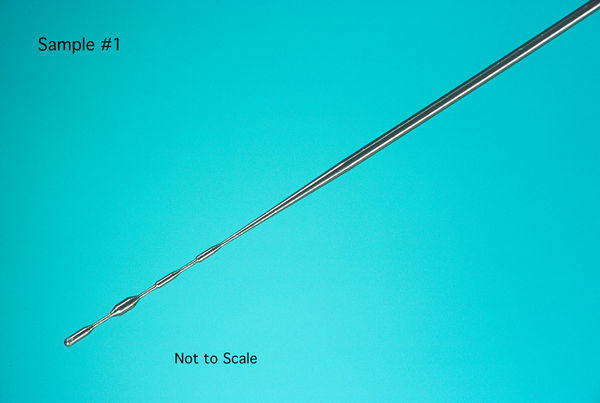
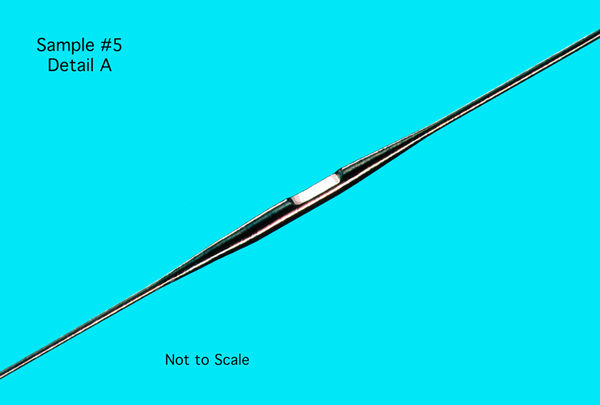
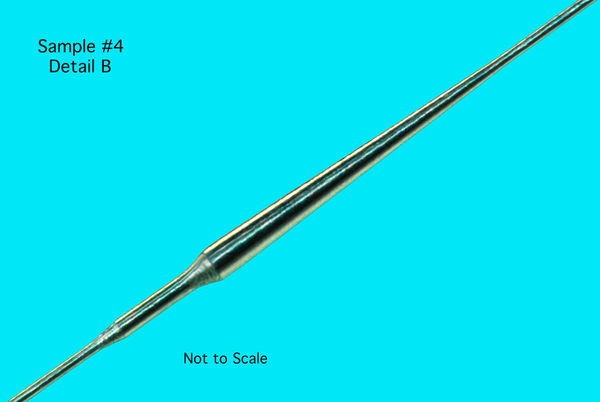
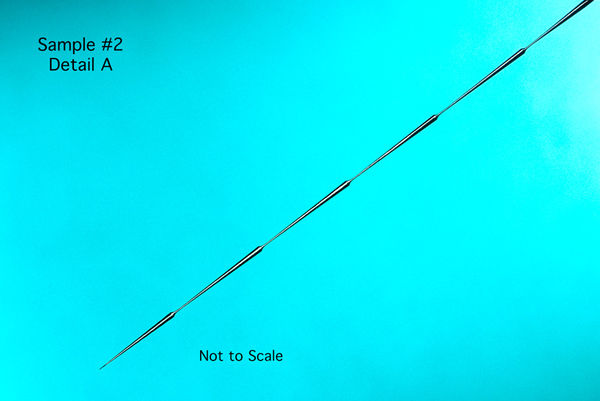
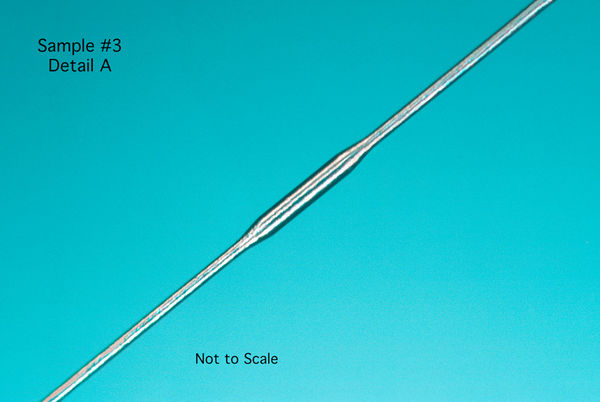
Feb 27, 2018 01:51:30 #
The only real reason to use a macro lens is if you need flat field. For copying documents or other flat objects, for which you need edge to edge sharpness, dedicated macro lenses are the way to go. In almost all other cases, a reversed normal lens (if it is of good quality) will give comparable results. There are some cases where spherical aberration will result in slight glow around the details of the object being photographed, but in any case a normal lens is optimized at the rear for the distance from the rear element to the focal plane, which is in the macro range, therefore an object at the focal distance that equals the flange distance is in the sweet spot. This is why reversing the lens gives better results than simply putting a non-reversed lens on extension tubes or bellows.
Feb 27, 2018 02:05:15 #
RWR
Loc: La Mesa, CA
nauticalmike wrote:
... what happens when you reverse a prime lens? Does it reverse everything meaning that the longer the lens the closer the focal point?
The longer the lens, the farther the subject distance for a given reproduction ratio.
nauticalmike wrote:
Does a 50mm lens give you a bigger image than say a 35mm lens will ...
The shorter lens will give you more magnification.
nauticalmike wrote:
... is it possible to use a reversed lens along with extension tubes?
It’s common to reverse lenses on extension tubes or bellows. The more extension, the more magnification. You’ll generally get better image quality with a reversed lens when you magnify beyond 1:1.
Feb 27, 2018 11:39:59 #
Martys,
I have only had experience with reversing 2 different zoom lenses and attaching them directly to the camera. The mag was about 4x that of my 1:1 macro. It sounds like you attached one lens to another that was reversed. So there must be an adapter mount with a screw on filter mount on both sides. How in the world did you ever come up with that combo? Was it based on mag math or trial and error?
I am a radiologist who used a lot of catheters and with my zoom reversed it appeared to have enough mag to see the tip well.
Thanks,
Photodoc16
I have only had experience with reversing 2 different zoom lenses and attaching them directly to the camera. The mag was about 4x that of my 1:1 macro. It sounds like you attached one lens to another that was reversed. So there must be an adapter mount with a screw on filter mount on both sides. How in the world did you ever come up with that combo? Was it based on mag math or trial and error?
I am a radiologist who used a lot of catheters and with my zoom reversed it appeared to have enough mag to see the tip well.
Thanks,
Photodoc16
Feb 27, 2018 11:51:33 #
RWR
Loc: La Mesa, CA
photodoc16 wrote:
Martys, br I have only had experience with reversi... (show quote)
https://www.bhphotovideo.com/c/buy/Macro-Couplers/ci/3066/N/4077634537
If you want to reply, then register here. Registration is free and your account is created instantly, so you can post right away.


